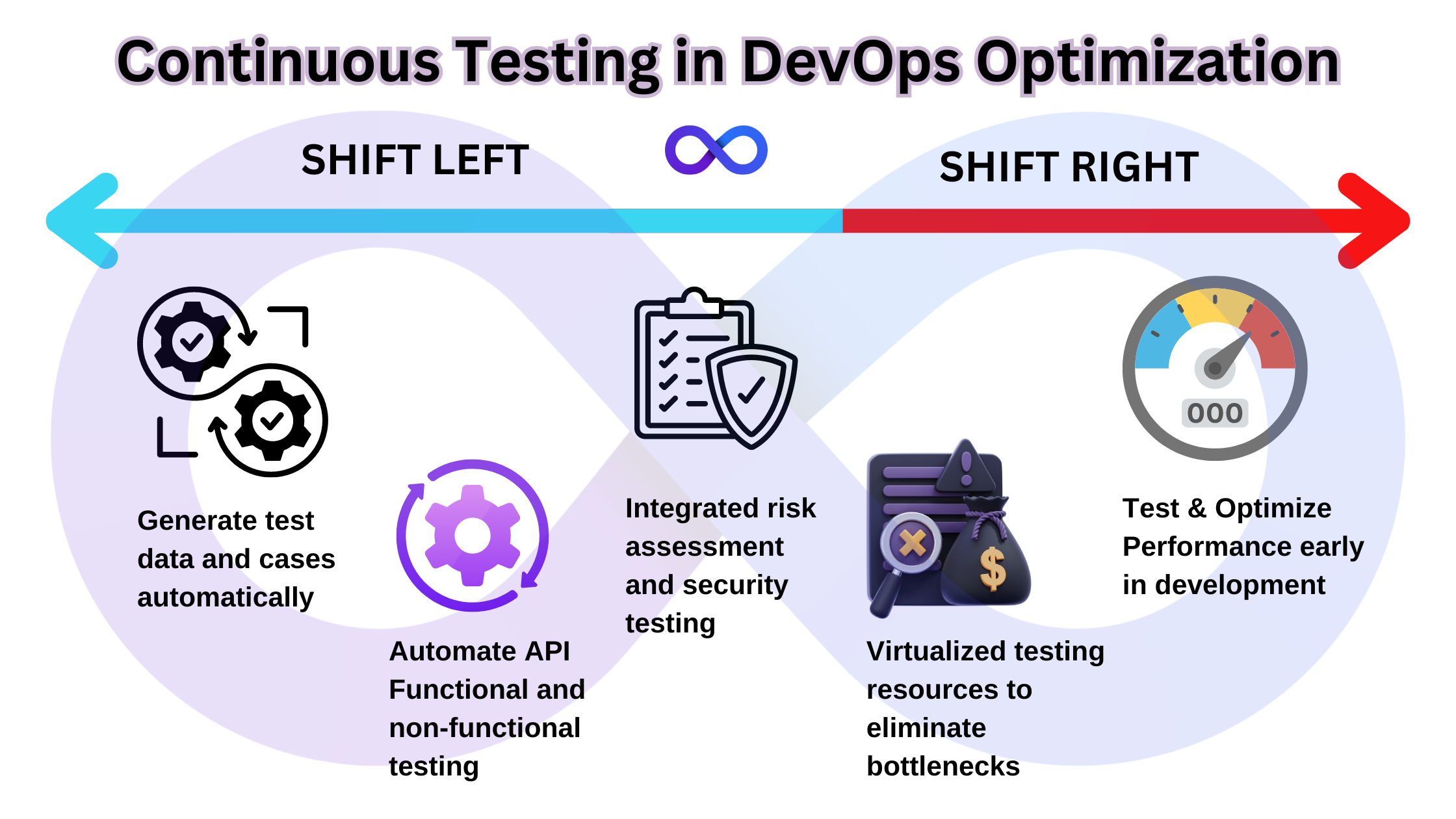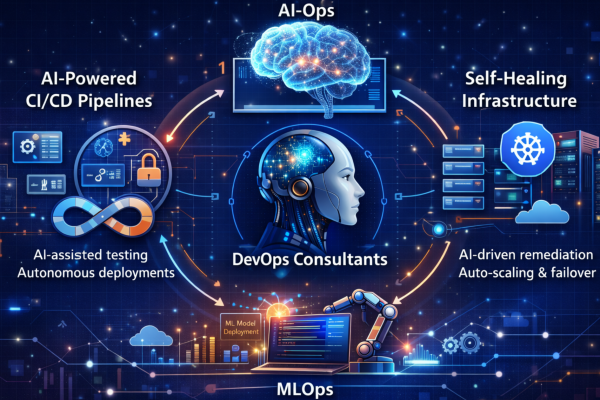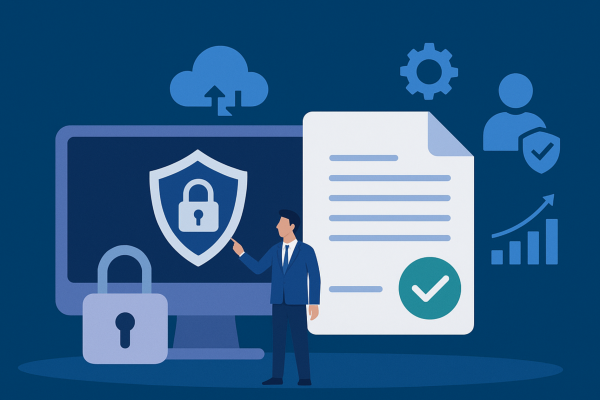Continuous Testing in DevOps Optimization
Introduction
Maintaining high-quality software delivery is crucial in the fast-paced world of software development, where customer demands and market conditions can change rapidly. DevOps, a combination of development and operations, aims to shorten the development lifecycle while delivering high-quality software continuously. One of the key practices in achieving this is continuous testing. For organizations working with DevOps service providers, understanding and implementing continuous testing can significantly enhance their software delivery processes.
What is Continuous Testing?
Continuous testing is an approach where testing is integrated into every stage of the software development lifecycle. Unlike traditional testing, which occurs after the development phase, continuous testing happens concurrently with development. This means that testing is not a separate phase but a continuous process that provides immediate feedback on the quality and performance of the code being developed.
The Role of Continuous Testing in DevOps
In a DevOps environment, the primary goal is to deliver software faster and more reliably. Continuous testing plays a critical role in this by ensuring that code changes do not introduce new defects and that the software remains functional and stable. It helps in identifying issues early in the development cycle, thereby reducing the cost and time required to fix them.
Benefits of Continuous Testing
Early Detection of Defects: Continuous testing allows for the early identification of defects, reducing the chances of finding critical bugs late in the development process.
Faster Feedback Loop: By integrating testing into the CI/CD pipeline, developers receive immediate feedback on their code, enabling quicker corrections.
Improved Quality: Regular testing ensures that code meets the required quality standards and functions as expected.
Reduced Time to Market: Automated testing processes streamline the testing phase, allowing for faster releases.
Cost Efficiency: Early detection of bugs reduces the cost associated with late-stage defect fixing and potential post-release issues.
Implementing Continuous Testing
Auto-scaling adjusts the number of cloud resources based on the current demand. This ensures that you only pay for what you use while maintaining optimal performance. AWS Auto Scaling, Azure VM Scale Sets, and Google Cloud’s Autoscaler are popular tools that can automate this process.
1. Automated Testing
Automation is at the heart of continuous testing. Automated tests can run quickly and frequently without human intervention. This encompasses unit tests, integration tests, functional tests, and performance tests. Popular tools for automated testing include Selenium, JUnit, TestNG, and Jenkins.
2. CI/CD Pipeline Integration
Integrating continuous testing into the CI/CD pipeline ensures that tests are executed automatically every time there is a code change. This integration helps in maintaining the quality of the code throughout the development process. Tools like Jenkins, GitLab CI, and CircleCI are commonly used for this purpose.
3. Test Coverage
Ensuring comprehensive test coverage is crucial. This means writing tests for all possible scenarios, including edge cases. Code coverage tools like SonarQube and JaCoCo can help measure how much of your code is covered by tests.
4. Environment Management
Setting up consistent and reliable test environments is important for accurate test results. Containerization tools like Docker can help in creating reproducible test environments.
5. Continuous Monitoring
Continuous testing is not just about running tests; it also involves monitoring the results and taking action based on the feedback. Monitoring tools like Splunk and ELK Stack can help in tracking test results and system performance.
Challenges in Continuous Testing
While continuous testing offers numerous benefits, it also comes with its set of challenges:
1. Test Maintenance:
As the codebase evolves, maintaining the test scripts can become challenging. Regular updates to test scripts are necessary to keep them aligned with the code changes.
2. Flaky Tests:
Flaky tests, which sometimes pass and sometimes fail without any code changes, can undermine the confidence in test results. Identifying and fixing flaky tests is crucial for reliable continuous testing.
3. Tool Integration:
Integrating various testing tools and frameworks into a seamless continuous testing process can be complex. Ensuring that all tools work together smoothly requires careful planning and execution.
4. Skill Set:
Continuous testing requires a combination of development and testing skills. Ensuring that the team has the necessary expertise can be a challenge.
Best Practices for Continuous Testing
To overcome these challenges and implement effective continuous testing, here are some best practices:
1. Shift-Left Testing:
Shift-left testing means starting testing activities early in the development process. This approach helps in identifying defects early and reducing the cost and effort of fixing them later.
2. Test Automation Frameworks:
Using robust test automation frameworks can simplify the process of writing and maintaining tests. Frameworks like Selenium, Appium, and Cypress provide a structured way to create and manage automated tests.
3. Continuous Integration and Continuous Deployment:
Ensuring that continuous testing is an integral part of your CI/CD pipeline is essential. This includes running tests automatically on every code commit and deploying only if all tests pass.
4. Parallel Testing:
Running tests in parallel can significantly reduce the time required for testing. This can be achieved by using cloud-based testing platforms or containerized environments.
5. Regular Test Reviews:
Regularly reviewing and updating test cases ensures that they remain relevant and effective. This includes removing outdated tests and adding new ones as the codebase evolves.
6. Comprehensive Test Reporting:
Detailed test reports provide insights into the quality of the code and help in identifying areas that need improvement. Tools like Allure and ExtentReports can be used to generate comprehensive test reports.
The Future of Continuous Testing in DevOps
As DevOps continues to evolve, continuous testing will play an increasingly important role. The future of continuous testing lies in:
1. AI and Machine Learning:
AI and machine learning can enhance continuous testing by identifying patterns in test results and predicting potential defects. This can help in creating more effective test cases and improving test coverage.
2. Test Automation Beyond UI:
Expanding test automation beyond the user interface to include API testing, performance testing, and security testing will provide a more comprehensive view of the software quality.
3. Integration with DevSecOps:
Integrating security testing into the continuous testing process, also known as DevSecOps, ensures that security is considered at every stage of the development lifecycle.
4. Continuous Testing as a Service (CTaaS):
As organizations increasingly adopt cloud-based solutions, Continuous Testing as a Service (CTaaS) is becoming more popular. This approach allows organizations to leverage cloud-based testing tools and infrastructure, reducing the need for maintaining on-premises testing environments.
Conclusion
Continuous testing is a critical component of DevOps optimization. By integrating testing into every stage of the development process, organizations can ensure that their software is of high quality and delivered quickly. Working with DevOps services providers can help in implementing continuous testing effectively, leveraging their expertise and tools to achieve optimal results. As the software development landscape continues to evolve, continuous testing will remain a key practice in maintaining the balance between speed and quality in software delivery.
Author







